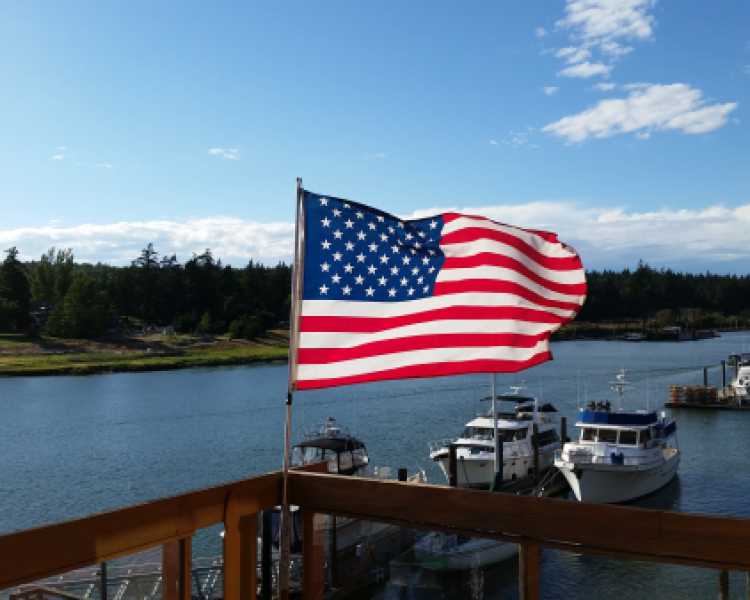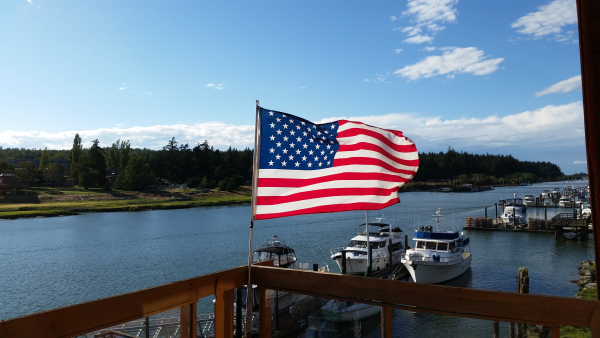Published Sept 26th, 2017 by Jeff Juel
The sea level is the elevation of still water - water without waves - in the ocean at a given point of time. A stilling well is a vertical tube that effectively removes short frequency waves from the surface and a tide gage measures the water level in the stilling well. It should be obvious that a reasonably long record of varying still water level at a tide gage can be used to calculate the mean sea level.
Tides are complicated and fascinating, but they are not the whole story. Barometric pressure also effects sea level. Under normal conditions, the weight of the atmosphere at sea level is equivalent to about 30 feet of water. When a low pressure cell passes over the sea level rises. Likewise, when a high pressure cell passes over, the sea level is depressed by the increased atmospheric pressure.
Strong wind passing over a shallow bay can literally blow the water into or out of the bay. This happened in Tampa Bay with Hurricane Irma. Before the hurricane hit the scientific consensus (proclaimed by the media) was that Tampa Bay would experience 5 to 10 feet of storm surge above the normal tide. The strong offshore winds actually caused Tampa Bay to dry up initially. The observed water level on the evening of 9/11/2017 was 2.4 feet higher than the predicted tidal water level. This was the maximum observed storm surge for the entire event, not the 5-10 foot prediction.
Another factor that effects observed still water level is the density of the sea water at the tide gage. salt water weighs roughly 65 lbs per cubic foot. fresh water only weighs 62.5 lbs per cubic foot. The density of sea water also decreases slightly with rising temperature. The result is that the observed water level at a tide gage will be higher than normal if the water is warmer and / or less saline.
At some locations the land adjacent to the ocean may be rising or falling. This can be caused by plate tectonics, subsidence, or soil liquefaction during an earthquake. If the land is rising faster than the long term trend for absolute sea level rise, the net effect is a falling mean sea level. This is the case for many tide gages in Alaska and Canada.
Consistent tide gage records show that the relative rate of sea level rise at the city of Seldovia Alaska is actually negative. The land is rising much faster than the sea level. This is probably due to "isostatic rebound". Isostatic rebound is land rising due to the fact that in northern latitudes glaciers that retreated 10,000 years ago are no longer pushing down on the land. The land on many northern coastlines is springing back up and it has not yet equalized.
A tide gage that continually records the water level in a stilling well relative to a nearby tidal benchmark can be used to quantify the absolute sea level rise (or fall). A few decades of tide gage records can be used to determine the next sea level trend. The website "NOAA Sea Level Trends" has various maps, graphs and statistics that show the apparent rate of sea level rise or fall at dozens of tide gages on the west and east coasts. As an example since 1899, the Seattle, WA sea level has been rising steady at 2 mm per year. The trend line since 1899 shows no change or acceleration in the rate of rise. There are 25 mm in an inch so this is equivalent to 8 inches of rise per century.
The longest tide gage record in the Western Hemisphere is from a tide gage at the Golden Gate in San Francisco Bay. The data set begins in 1854. This predates the use of oil, and in 1854 coal was being burned at a trivial rate compared to today. The trend line shows a constant rate of relative sea level rise. As with the trend line for the Seattle tide gage, there is no appreciable acceleration in the rate of rise. This is true of EVERY tide gage on the planet ! No acceleration in the rate of mean sea level rise now means what about "global warming" fears ???
Share This Post...











